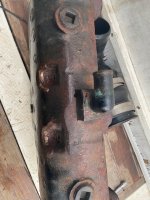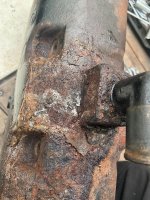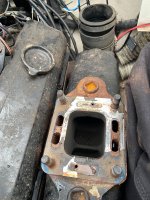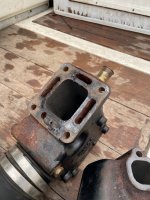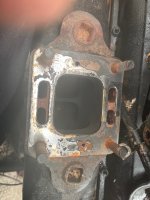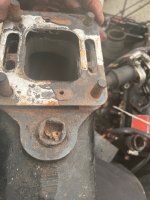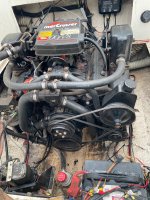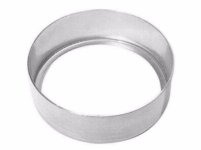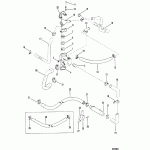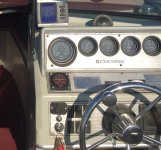AnOldMedic
Cadet
- Joined
- Feb 13, 2024
- Messages
- 13
Want to see what everyones thoughts are.
My boat runs 180 to 200, up and down. I typically troll and it remains at 180, sometimes it creeps to 200, but goes back down. If it doesn't I give it a little throttle, and it drops down. Cools rapidly to 160 when wide open for a cruise, but then comes back up to 180.
Every year I have replaced the impeller. My water pocket looks good. I have good water flow coming from the impeller. I have lake tested it, and it pumps water out like crazy.
I have replaced the thermostat 140 degree. And this made no difference. I have adjusted the T valve balls on my thermostat so they are tighter, and this keeps temps closer to the 180.
I have cleaned/ checked the power steering cooler for any blockage. I don't know where else to check for blockages. I never pulled the thermostat completely off, just took the old one out and put a new one in.
Not sure if I didn't tighten the hose that runs from the steering cooler well enough when I checked it for blockages, but two times while running wide open the hose popped off. So I started to pay attention to hoses a lot closer, and started to squeeze them. Pressure is building up, but I don't know why or where. I have noticed the hose that runs from the circulating pump to the thermostat housing gets extremely hard at times, and others feels normal. This is where I think my problem lies. Just don't know what it means.
I am worried about this pressure, and My risers get hot, sometimes to hot to hold your hand on them for any amount of time. Which I think is increasing my engine temp also.
I had the boat winterized, and asked them to check my hose that runs thru the hull for any kinks, they say everything looks good. Had the bellows done 3 seasons ago.
So heres where I am at.
I pulled the risers and the exhaust manifolds. I didn't think they looked that bad, they have been on the boat since I owned it for 8 years now. I have attached pictures. The PORT side exhaust manifold is extremely rusted on the bottom, not sure why. starboard looks fine. No water intrusion in the exhaust parts of either manifolds or risers.
I never noticed any leaks, my bilge usually has some water, so I don't know if I would notice a leak or not. Directly underneath that exhaust manifold is my power steering cooler.
I pulled the water circulation pump, because it sounded like the bearing was a little sketchy.
I have ordered all new exhaust manifolds, risers, and water circulation pump and a new thermostat. I would like to send some of this stuff back if I can immediately rule it out.
Please look at my pictures, and let me know what your thoughts are.
I appreciate it.
Let me know if I need to clarify anything.
My boat runs 180 to 200, up and down. I typically troll and it remains at 180, sometimes it creeps to 200, but goes back down. If it doesn't I give it a little throttle, and it drops down. Cools rapidly to 160 when wide open for a cruise, but then comes back up to 180.
Every year I have replaced the impeller. My water pocket looks good. I have good water flow coming from the impeller. I have lake tested it, and it pumps water out like crazy.
I have replaced the thermostat 140 degree. And this made no difference. I have adjusted the T valve balls on my thermostat so they are tighter, and this keeps temps closer to the 180.
I have cleaned/ checked the power steering cooler for any blockage. I don't know where else to check for blockages. I never pulled the thermostat completely off, just took the old one out and put a new one in.
Not sure if I didn't tighten the hose that runs from the steering cooler well enough when I checked it for blockages, but two times while running wide open the hose popped off. So I started to pay attention to hoses a lot closer, and started to squeeze them. Pressure is building up, but I don't know why or where. I have noticed the hose that runs from the circulating pump to the thermostat housing gets extremely hard at times, and others feels normal. This is where I think my problem lies. Just don't know what it means.
I am worried about this pressure, and My risers get hot, sometimes to hot to hold your hand on them for any amount of time. Which I think is increasing my engine temp also.
I had the boat winterized, and asked them to check my hose that runs thru the hull for any kinks, they say everything looks good. Had the bellows done 3 seasons ago.
So heres where I am at.
I pulled the risers and the exhaust manifolds. I didn't think they looked that bad, they have been on the boat since I owned it for 8 years now. I have attached pictures. The PORT side exhaust manifold is extremely rusted on the bottom, not sure why. starboard looks fine. No water intrusion in the exhaust parts of either manifolds or risers.
I never noticed any leaks, my bilge usually has some water, so I don't know if I would notice a leak or not. Directly underneath that exhaust manifold is my power steering cooler.
I pulled the water circulation pump, because it sounded like the bearing was a little sketchy.
I have ordered all new exhaust manifolds, risers, and water circulation pump and a new thermostat. I would like to send some of this stuff back if I can immediately rule it out.
Please look at my pictures, and let me know what your thoughts are.
I appreciate it.
Let me know if I need to clarify anything.




















